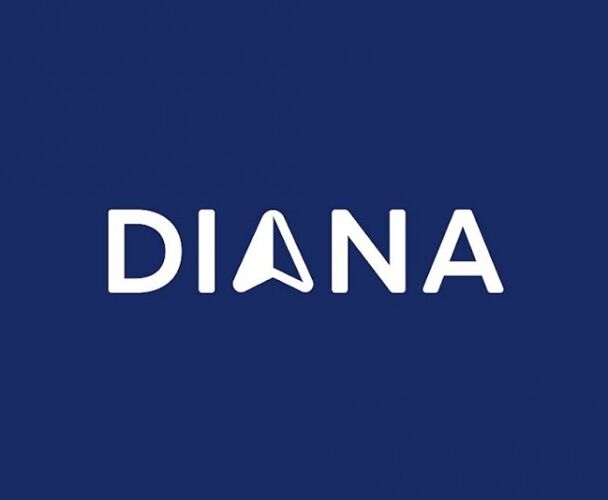On 28 May 2020, the Government of Estonia decided to extend the payment of salary subsidies into June 2020, in order to support employers in difficulty due to coronavirus-related restrictions and their economic impact. Although payment of the subsidies will continue, the eligibility and payment conditions have changed compared to previous months. In this article, we will lay out the terms under which employers can claim salary subsidy for the month of June. We will also explain the additional obligations of employers in relation to the return of employees to the workplace.
Extension of salary subsidies in June
In order to receive a state subsidy for the month of June, the employer must meet the following criteria:
1) the employer’s turnover has decrease, or in the absence thereof, the income of the employer has decreased by at least 50% in June 2020 as compared to the month of June last year;
2) the employer did not owe national tax, other contributions or environmental charges within the meaning of the Taxation Act as of 1 March 2020, or the tax debt has been paid or deferred by the time of submission of the application;
3) the employer is taking the following measures concerning at least half (50%) of their staff during the whole month of June:
- paying average wages under Section 35 of the Employment Contracts Act because their working hours have been reduced by at least 30% compared to the agreement; or
- reducing their salary under Section 37 of the Employment Contracts Act by at least 30% or to the minimum wage as established by the Government.
Salary subsidy may be paid only to an employee who meets all the following conditions:
1) the employee is subject to the measures described above;
2) the employee commenced work not later than on 1 March 2020 and was entered in the employment register by the same date at the latest.
Compensated amount and time period
The Unemployment Insurance Fund will pay the employee the extended subsidy of 50% of the employee’s average wages, but not more than 800 euros in gross amounts. The subsidy will be legally treated as wages paid by the employer, transferred to the employee by the Fund in the name of the employer but from the Fund’s own accounts. As the subsidy paid by the Fund is calculated on the basis of the employee’s wages over the past 12 months, it is possible that the subsidy does not amount to 50% of the employee’s actual current wages. The employer must pay gross wages at least in the amount of 150 euros to the employee receiving the salary subsidy. The above wages paid by the employer in combination with the subsidy payable by the Fund will ensure that the employee receives at least the minimum wage established by the Government, in proportion with the working hours agreed under the employment contract.
Applying for the subsidy
To apply for the subsidy, the employer must submit an application to the Unemployment Insurance Fund after having paid the wages to the employees, generally within five calendar days.
Applications can be submitted through the Unemployment Insurance Fund e-service (https://www.tootukassa.ee/eng/tkauth/login). The application can be submitted on behalf of the employer either by a member of the management board listed in the commercial register or by a person authorised by a member of the management board in the Fund’s e‑service. Instructions for authorisation are available at https://www.tootukassa.ee/sites/tootukassa.ee/files/volituse_andmine_e-tks.pdf.
Important points regarding the necessary authorisation for the person submitting the application:
1) Please make sure that the member of your management board has valid authorisation in the commercial register.
2) Where board members have joint representation rights, it is sufficient if one of them submits the application (this is according to a spoken statement by the Unemployment Insurance Fund).
3) If the employer’s board members are foreign nationals who do not have an Estonian ID card or e-residency card and no representative of the employer (e.g. an accountant) is currently authorised to submit documents to the Unemployment Insurance Fund, the Fund recommends issuing a power of attorney to an employee who holds an ID card or an e-residency card. The Estonian ID card or e-residency card will allow the employee to enter the e-service and submit the application on behalf of the employer. Please remember to provide the employee with all the information and documents necessary for the submission of the application.
Establishing eligibility for the subsidy
When applying for the subsidy, the employer is required to explain which eligibility conditions it meets. If the employer wants to rely on loss of turnover, this can be done with a certificate from the Tax and Customs Board’s e-service (e-MTA). The loss of turnover must also be explained separately (e.g. by describing that work at the employer’s factory has been partially suspended in connection with cancellation of orders).
Timing of the payments
The Unemployment Insurance Fund seeks to make the payments to employees within 5 working days of receiving a correctly submitted application. Therefore, employees may receive the compensation after their normal payday. We recommend that you inform your employees of this in advance.
Redundancy restrictions
When applying for extension of the salary subsidy, the related restriction of redundancies must also be taken into account. If the employer terminates the employment relationship of the employee who received compensation in June or July with redundancy, the subsidy must be returned in full by the employer.
Employees return to workplaces — what should the employer know and do?
Following the end of the emergency situation and the slowdown of the coronavirus outbreak, staff who have been working from home or just staying home have started to return to company premises. The return to workplaces has raised questions among employers about their responsibilities in relation to ensuring a safe working environment. It should be noted that the legislator has not introduced any new requirements in light of the coronavirus pandemic. The employer must continue to ensure a safe working environment in accordance with the Occupational Health and Safety Act. Guidelines for safe return to work have been issued by the Ministry of Social Affairs, the National Institute for Health Development as well as the European Agency for Safety and Health at Work (EU-OSHA).
As the coronavirus is a new biological hazard, the employer must determine whether a new risk assessment of the working environment is necessary to evaluate the risks posed by the virus. In the course of the risk assessment, the employer should also consider the risks to the mental health of workers and take into account the specific conditions related to vulnerable employees. Workers’ representatives should be included in the risk assessment. The employer must take the necessary measures to mitigate the identified risks. Further information on the coronavirus as a biological hazard and on risk assessment is available at https://www.tooelu.ee/et/tootajale/tookeskkond/Tookeskkonna-ohutegurid/Bioloogilised-ohutegurid/Koroonaviirus-kui-bioloogiline-ohutegur
In order to ensure a safe working environment, it is recommended to consider the restructuring of work in such a way as to help minimise physical contact with both employees and customers to the greatest extent possible (including organising meetings and discussions via electronic channels, making sure that employees take resting breaks at different times and installing barriers between workplaces). Continuing with partial remote work and returning to work in stages should also be considered. It is equally important to remind employees of hygiene requirements, ensure the availability of hygiene products and, if necessary, personal protective equipment, as well as arrange cleaning and airing of frequently used rooms, objects and surfaces (including switches, handles and equipment). In order to create a good working atmosphere and a sense of security, the employer can inform employees of the measures taken and new work arrangements introduced to ensure a safe working environment, instruct employees on how to act in a situation where an employee or a loved one has become ill, and offer psychological support to employees (e.g. by the direct supervisor, HR manager or, if necessary, by a psychologist). It should emphasised to employees that in the presence of any signs of illness, they must stay at home.
Take a closer look at the relevant guidelines:
- Instructions from the Ministry of Social Affairs: https://www.tooelu.ee/et/tootajale/tookeskkond/Tookeskkonna-ohutegurid/Bioloogilised-ohutegurid/COVID-19/Tagasitoole
- Guidelines from the National Institute for Health Development: https://www.terviseinfo.ee/et/blogi/5347-toeoele-naasmine
- Guidelines from the European Agency for Safety and Health at Work: https://osha.europa.eu/et/publications/covid-19-back-workplace-adapting-workplaces-and-protecting-workers/view https://oshwiki.eu/wiki/COVID-19_–_Tagasi_tööle_–_Töökohtade_ümberkorraldamine_ja_töötajate_kaitse
The article was compiled by Partner Karina Paatsi, Senior Associate Heili Haabu and Associate Johanna-Britt Haabu.





